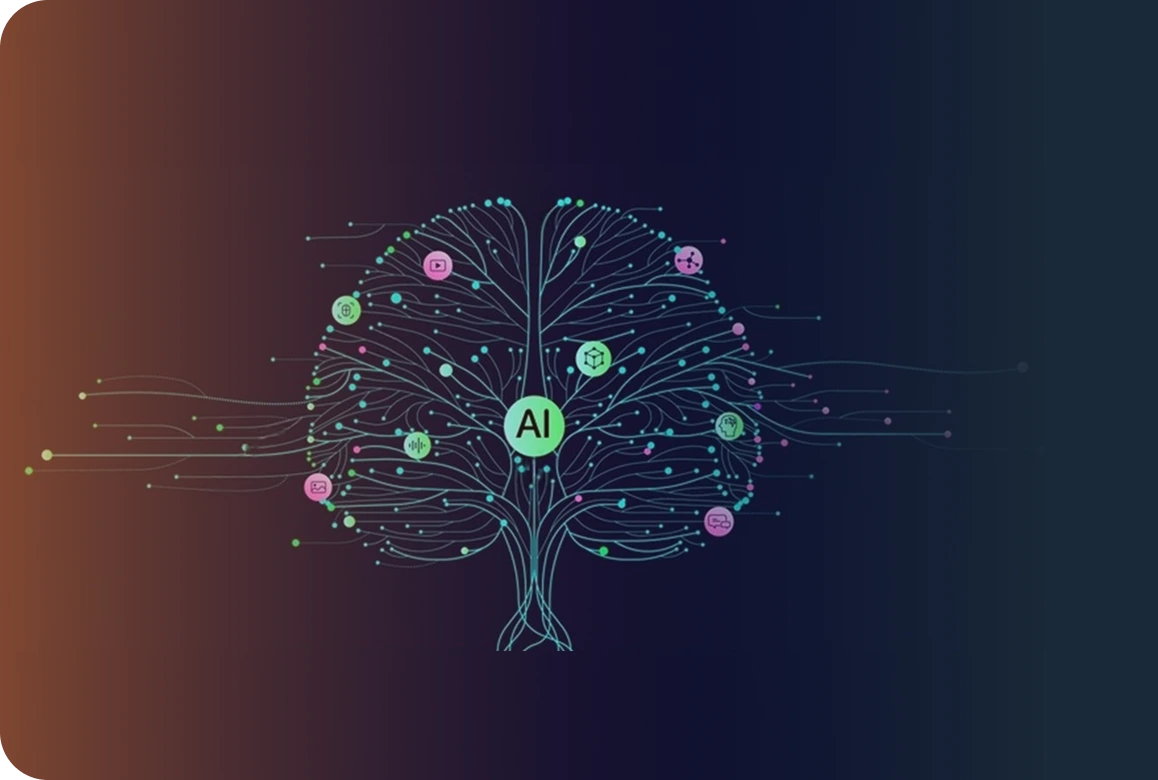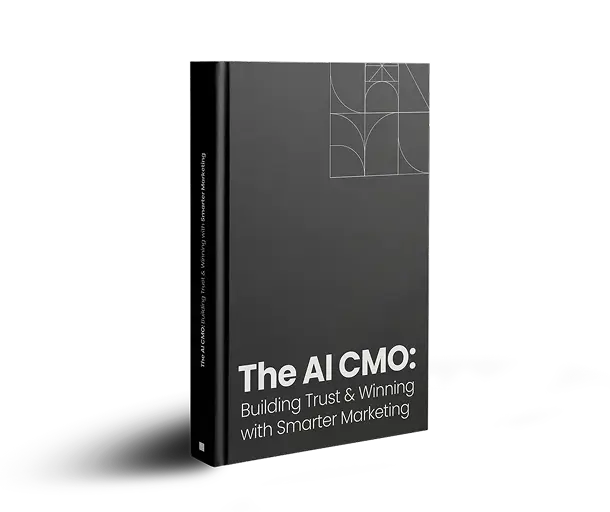Introduction
Demand generation has evolved into one of the most critical growth functions within modern B2B marketing. It’s about creating meaningful engagement, aligning closely with sales, and delivering programs that drive pipeline impact and business outcomes.
But in a market that’s increasingly saturated and fast-moving, many marketing leaders are asking: How do we build demand programs that are relevant, scalable, and outcome-driven? What shifts are reshaping the future of demand generation? And how do we ensure marketing is driving the kind of momentum that sales teams actually value?
To explore these questions, we’re joined by
Shriram Ragothaman, who leads demand generation for the SMB and Commercial segments at Freshworks.
Shriram brings a unique perspective, having played a key role in scaling Freshworks’ GTM motion from $200M to over $820M in revenue. With a background in sales and recognition as a President’s Club winner, he brings a results-first mindset to marketing. His focus is on measurable outcomes such as driving intent, relevance, and pipeline velocity rather than chasing vanity metrics.
From building outbound engines and global digital campaigns to driving partner-led growth, Shriram believes the most effective demand generation is aligned, accountable, and built for momentum. In this conversation, he shares key lessons from his journey, offers insights into where demand gen is headed, and provides practical guidance for marketers navigating today’s complex B2B landscape.
Let’s dive in.
Here’s What We Uncovered in our Conversation with Shriram:
UnboundB2B: How has your journey in demand generation marketing shaped your approach over time, and what advice would you share with fellow marketers working to drive results in today’s environment?
Shriram: My journey in demand generation marketing has been shaped by a deep appreciation for the sales perspective because that’s where I started. Coming from a sales background, I’ve always believed that marketing’s first customer is sales. That belief has shaped how I’ve built every program: with empathy for the frontline, urgency in execution, and a clear understanding of what drives real conversations.
Early on, I questioned why we were chasing lead volume when revenue was the real outcome. That mindset shift pushed me toward a B2B demand generation strategy focused on creating demand, not just capturing it by sparking genuine buying intent rather than mere interest. Over time, my role evolved to owning pipeline outcomes, leading GTM launches, building modular playbooks, and weaving
sales and marketing collaboration into every layer of strategy. Today, I see demand generation marketing as a revenue operation: data-informed, creative when it counts, and built for scale without losing relevance.
If I could give one piece of advice to marketers today, it’s this: focus on creating demand along with capturing demand. The real win is becoming the voice buyers trust before they even enter the funnel. Great demand gen earns its seat at the table by sparking urgency, the kind that makes a buyer think, “Why aren’t we already doing this?”
But it’s not just about building programs. It’s about being the first to support sales, understanding their challenges, and helping them win. At the same time having the clarity to push back when a message won’t resonate with your audience. The best results come from that intersection of buyer insight and sales reality. Protecting that balance takes experience, empathy, and the courage to lead with conviction.
UnboundB2B: What emerging trends or shifts do you believe will define the future of demand generation marketing over the next couple of years?
Shriram: One of the most defining shifts in the next 1–2 years is the move toward a signal-first marketing model. Micro-behaviors, not inflated intent scores, will determine who gets prioritized. AI will handle more of the operational heavy lifting, but actual conversion will still depend on timing, relevance, and how well we understand our buyers in context.
Another major trend is the rise of the “phygital marketing” experience, blending digital and physical touchpoints to meet buyers where they are, consistently and personally. B2B buyers expect seamless, personalized interactions just like consumers, so orchestrating journeys that flow naturally between webinars, roundtables, and tailored nurture streams is critical.
Demand generation marketing in the future will be multi-channel, multi-signal, and multi-format, built for agility. As “on-demand buying” becomes the norm, pipeline velocity depends on how quickly marketing activates the right conversations anywhere, anytime.
UnboundB2B: In an era of content overload, what does it really take for marketers to create content that cuts through the noise and drives genuine buyer engagement?
Shriram: With content fatigue on the rise, the only way to break through is by making content a strategic asset, not just a deliverable. The guiding question I use is simple: Does this help the buyer make progress? If not, it doesn’t ship.
The most effective
B2B content strategy goes beyond the campaign window, it shows up in sales conversations, onboarding flows, and even renewal decks. Content-driven marketing means creating content that educates, empowers, and enables action. Content that feels less like marketing and more like momentum. When a customer says, “That guide made us pause and rethink how we run IT,” that signals real engagement.
UnboundB2B: As a marketing leader, how do you inspire innovation within your team while staying in tune with evolving buyer expectations and behaviors?
Shriram: As a marketing leader, fostering innovation starts with clarity and trust. Teams thrive when they know what good looks like and are empowered to test new ideas within that frame. But innovation doesn’t always come from brainstorming sessions and it often comes from the field.
Some of our strongest plays were sparked by sales feedback, a competitive displacement insight from a discovery call, or simply listening to the pain our ICPs experienced when stuck with complex, chaotic tools. Those moments, when we hear “we chose wrong, and here’s what it cost us”, become fuel for sharper positioning and more relevant programs.
It’s about staying close to the problem space, learning from every frontline touchpoint, and building fast. Velocity with accountability will always outperform slow, safe perfection, especially in a market that moves as quickly as our buyers do.
UnboundB2B: What do you think about the role of external partners in driving marketing performance, and what separates a good strategic marketing partnership from a great one?
Shriram: Collaborating with the right external partners is critical to accelerating growth, especially in demand generation marketing environments, where bandwidth is tight and expectations are high. The best partners feel like an extension of the team, not just delivering output but adding insight, ownership, and pace.
For me, a true
strategic marketing partnership is proactive, responsive, and empathetic to the reality that a marketer’s success and career trajectory depend on shared outcomes. Great partners don’t wait for briefs, they bring ideas, flag risks early, and share examples of how similar brands are achieving more through smarter execution.
The ones who stand out are those who challenge assumptions, co-create solutions, and help marketing teams punch above their weight. This is what strategic marketing partnerships look like in practice.
UnboundB2B: Looking ahead to 2025, what are your key priorities for demand generation and what developments in B2B marketing are you most looking forward to?
Shriram: My top priorities for demand generation marketing in 2025 center on operational precision at scale. That means evolving beyond campaign volume and instead building systems that deliver measurable impact, tighter MQC-to-SAO flows, regional maturity models that match local sales motion, and creativity that drives urgency, not vanity metrics.
What excites me most is the opportunity to earn a seat at the buying table before a need is even defined. The future of B2B marketing lies in shaping decisions early, not reacting late. It’s about becoming the first ally to sales, showing up with conviction, and having the clarity to push back when something doesn’t resonate with the market. Demand gen is no longer just about generating leads, it’s about guiding momentum across the entire buyer journey.












